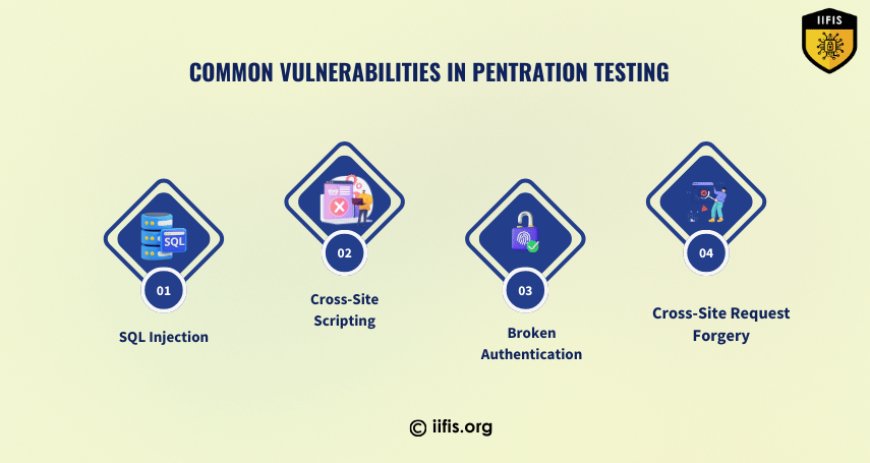How do you perform a web application penetration test?
Learn how to perform a web application penetration test, from planning and reconnaissance to exploitation and reporting for robust security.

As a certified penetration tester, I've conducted numerous web application penetration tests, and each one offers unique challenges. From bypassing poorly implemented authentication to uncovering logic flaws missed by scanners, the real value lies in thinking like an attacker. It's not just testing—it's anticipating threats and strengthening defenses where it matters most.
What Is a Web Application Penetration Test?
A web application penetration test, often referred to as a "pen test," is a simulated cyberattack conducted on a web application to identify security vulnerabilities before malicious actors can exploit them. This comprehensive assessment goes beyond basic vulnerability scans by mimicking real-world attack techniques to uncover hidden weaknesses.
The goal is to evaluate the app’s code, configurations, infrastructure, and overall functionality. Penetration testers can help organizations understand their web application security posture, comply with industry regulations, and build user trust by ensuring robust data protection.
Planning and Scoping the Test
Effective penetration testing starts with meticulous planning. The penetration tester collaborates with stakeholders, such as IT teams, security officers, and business leaders, to clearly define the test’s scope and objectives. This phase is critical to avoid scope creep and ensure that the test aligns with business priorities.
Key elements include:
-
Identifying Applications to Test: Prioritizing high-value applications, APIs, or components that handle sensitive data.
-
Defining Testing Methods: Choosing between black-box (no prior knowledge), white-box (full knowledge), or grey-box (partial knowledge) testing.
-
Setting Objectives and Success Criteria: Determining what success looks like, such as identifying critical vulnerabilities or testing incident response capabilities.
-
Establishing Rules of Engagement: Defining boundaries to avoid unintentional disruptions, including legal permissions and acceptable testing hours.
Information Gathering and Reconnaissance
The reconnaissance phase is like detective work. Penetration testers collect extensive information to identify potential attack vectors. This includes both passive techniques (without interacting directly with the target) and active methods (engaging with the application).
Common activities include:
-
Domain Enumeration: Identifying subdomains, DNS records, and domain-related metadata.
-
Network Mapping: Discovering IP addresses, hosting environments, and server configurations.
-
Technology Stack Analysis: Determining the server software, frameworks, and third-party libraries used.
-
Application Behavior Observation: Examining how forms, APIs, and input fields process data.
Effective reconnaissance can reveal overlooked vulnerabilities that might not be evident during direct testing, making it a key part of web application security assessments.
Identifying Vulnerabilities
After gathering information, the tester moves on to identifying potential vulnerabilities. This phase involves both automated tools and manual techniques to detect common security issues and complex logic flaws.
Key areas of focus include:
-
Automated Scanning: Tools like Burp Suite, OWASP ZAP, and Nikto help detect known vulnerabilities quickly.
-
Manual Testing: Critical for finding nuanced security issues such as business logic flaws, improper access controls, and complex injection attacks.
-
Common Vulnerabilities:
-
SQL Injection (SQLi): Exploiting database queries to access or manipulate data.
-
Cross-Site Scripting (XSS): Injecting malicious scripts into web pages.
-
Broken Authentication: Flaws in login systems that allow unauthorized access.
-
Insecure Direct Object References (IDOR): Accessing unauthorized data by manipulating request parameters.
-
Cross-Site Request Forgery (CSRF): Tricking users into performing unintended actions.

Identifying vulnerabilities is not just about finding flaws but also understanding their potential impact on business operations and long-term web application security.
Exploitation and Gaining Access
Once vulnerabilities are identified, the tester attempts to exploit them to assess their real-world impact. This stage simulates how a malicious actor might compromise the application, allowing organizations to understand the severity of each issue.
Exploitation activities may include:
-
Gaining Unauthorized Access: Bypassing authentication mechanisms to access restricted areas.
-
Data Extraction: Retrieving sensitive information, such as personal data or financial records.
-
Privilege Escalation: Gaining higher-level access within the application or system.
-
Bypassing Security Controls: Evading firewalls, intrusion detection systems, or other protective measures.
The goal isn’t to cause harm but to demonstrate how vulnerabilities could be exploited and what the potential consequences would be. A skilled penetration tester understands how to safely simulate these actions while protecting system integrity.
Post-Exploitation and Reporting
After successful exploitation, the tester documents all findings in a comprehensive report. This report serves as a crucial tool for decision-makers to understand risks and prioritize remediation efforts.
Key components include:
-
Executive Summary: A high-level overview for management, focusing on business impact.
-
Detailed Findings: A technical breakdown of each vulnerability, including the method of exploitation and potential risks.
-
Evidence: Screenshots, logs, and other proof of concept to validate findings.
-
Remediation Recommendations: Clear, actionable advice for fixing vulnerabilities.
A well-structured report bridges the gap between technical teams and leadership, ensuring that web application security issues are effectively addressed and mitigated.
Remediation, Retesting, and Continuous Security
Penetration testing doesn’t end with the report. Remediation is a collaborative process where development and security teams fix identified vulnerabilities. After remediation, retesting verifies that the issues have been resolved and no new vulnerabilities have been introduced.
Key steps include:
-
Fixing Identified Vulnerabilities: Applying patches, reconfiguring systems, and implementing secure coding practices.
-
Retesting: Validating the effectiveness of remediation measures through additional testing.
-
Continuous Security Monitoring: Regular security assessments, vulnerability scans, and threat monitoring to stay ahead of emerging risks.
Organizations are encouraged to adopt DevSecOps, integrating security into every phase of the software development lifecycle. This proactive approach minimizes security gaps and ensures continuous improvement in web application security.
In my experience as a penetration tester, I’ve learned that even well-built applications can have hidden security gaps. A proper web application penetration test helps find and fix these issues before attackers do. It’s not just about testing once—it’s about building a habit of staying secure.
If you're interested in learning more or starting a career in this field, I recommend the Application Security Certification It’s designed to teach you practical skills like finding software bugs, writing secure code, and protecting applications from real-world threats.























